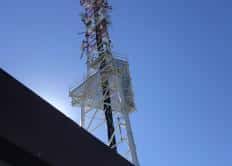On the night of Monday 24 to Tuesday 25 September 2018, TDF technicians will be working on the 2 sites of its main network on Reunion Island on the occasion of the digital terrestrial television (DTT) frequency reorganization plan. During this operation, 4 technicians will be mobilized.
As a reminder, the DTT platform remains the leading mode of TV reception in France, with coverage of 97% of the population and 68% of households using it (IFOP survey - May 2018).
The area concerned by this new phase of redevelopment covers more than 230,000 inhabitants in almost every commune on the island (see map).
The main distribution hubs are located around the communes of Le Port, Saint-Benoît and the summit of Piton Textor.
From Tuesday, households in the areas concerned will have to carry out an automatic channel scan to continue receiving all DTT channels.
An operation of precision and expertise
The characteristics of this mountainous island make the operation a delicate one. Interventions require expert know-how and precision. TDF technicians are mobilized in advance and on D-day to restore digital terrestrial television broadcasting as quickly as possible to ensure continuity of service.
A supervision unit has been set up to closely monitor the entire system at the 9 TDF sites concerned.
Operations will take place in two stages:
- On the 2 sites of TDF's main network, the interventions will take place on Monday night, between 11:00 pm and 6:00 am (metropolitan time), to enable as many viewers as possible to get their DTT channels back on Tuesday morning ;
- On the 7 other sites of the complementary network, they will continue until Thursday, September 27, 2018.
The work will mainly involve changing the multiplexing cell and modifying the transmission configuration. On this occasion, TDF will modify 9 frequencies.
New frequencies for mobile operators
The rearrangement of DTT frequencies, which began in October 2017, is entering a new phase, the first of which is taking place outside mainland France. The 3,400 DTT frequencies are gradually being rearranged to enable the transfer of the 700 MHz band, with a view to making new frequencies available to operators and thus providing better mobile coverage across the territory. Fifteen rearrangement phases will take place between now and June 2019.
New Aquitaine, Provence-Alpes-Côte-d'Azur, part of Occitanie, western Pays de la Loire, Grand Est, Bourgogne-Franche-Comté and Auvergne-Rhône-Alpes have already undergone DTT upgrades, as has the Île-de-France region in April 2016, at the time of the switchover to High Definition DTT. In each phase, the work was carried out successfully. This transfer of frequencies has enabled mobile operators to roll out their 4G networks in the 700 MHz band.
TDF, a major player in Overseas France
TDF is present in 8 overseas territories, with 264 audiovisual broadcasting stations, serving 2.65 million inhabitants over almost 120,000 km_. These points of presence broadcast 218 DTT frequencies for television and 360 FM frequencies for radio.
TDF also deploys and operates telecommunications networks and infrastructures for fixed and mobile telephony operators, and supports local authorities in the development of their territory.

